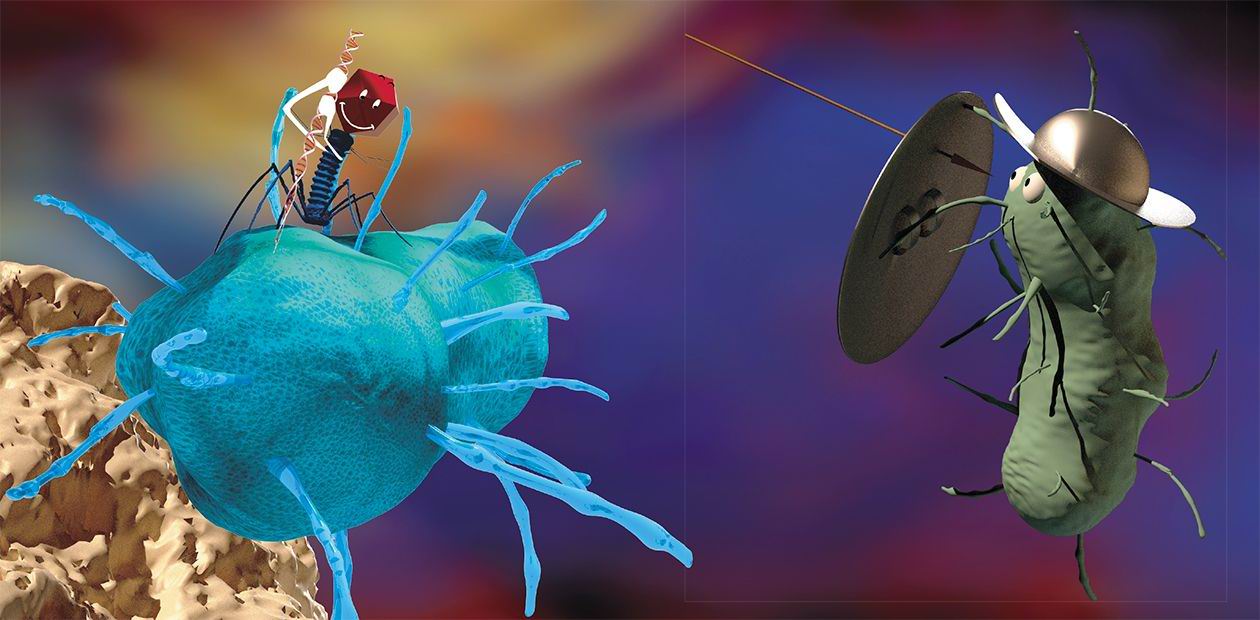Bacteriophages – the enemies of our enemies
What is a bacteriophage? Most will say this is a drug doctors told them about. Some will reply that bacteriophages (or just phages) are tiny viruses invading bacteria, and biologists will tell a good many amazing stories about their discovery, the important role they have played in the development of science and the promise held by up-to-date technologies developed on the basis of these tiny viruses
When these bacteria killers were discovered a hundred years ago, they immediately took center stage: enthusiasts believed that the miraculous viruses would completely rid mankind of infectious diseases. The new method – phage therapy – became widely known after the publication, in 1925, of Arrowsmith, a famous novel by Sinclair Lewis, which told an idealized story of a young microbiologist who had discovered a wonder drug. The book earned the author the Nobel Prize for Literature but in real life no miracle happened: the lack of knowledge on virus biology and absence of key molecular technologies in those distant years prevented the scientists from tapping the full therapeutic potential of bacteriophages and so interest in them, especially in the West, was lost.
In the 1950s, bacteriophages again came to the focus of attention but this time as the most elemental biological organisms having their own genomes. Using them as “laboratory guinea pigs,” the scientists presumed they would uncover the basic mechanisms underlying the functioning of living systems. These expectations were met in full: the study of phage genes and proteins gave answers to high-priority problems concerning the basis of life. The “by-product” of this research were basic technologies that gave birth to a new promising area – gene engineering.
In the recent years there has been an upsurge of interest in bacteriophages. A new knowledge of their expansion and diversity has clearly demonstrated the important role these tiny organisms play in the biosphere. Bacteriophages came to be called the “dark matter” of the biosphere; according to some estimates, their number on the earth is about 1031 virions and their total mass is 109 tons. The human gastrointestinal tract contains about 1012 bacteriophages, i. e. almost 0.5 mg.
Today, bacteriophages are an indispensible tool for molecular biologists allowing them to operate with DNA when dealing with the problems of synthetic biology. The study of the defense and attack structures used by phages and bacteria in their eternal war has lead to the discovery of the enzymes and nucleic-protein complexes that have made it possible to create genome editing techniques, which made a revolution in biological research and opened up principally new opportunities for the medicine of tomorrow. Bacteriophage enzymes are used as biologically active substances, and phages serve as a basis for the creation of nanometer objects with a given structure having a wide range of applications, from drug delivery and developing biosensors for diagnostic systems to the production of materials used in nanoelectronics.
And yet the key application area, both at present and in the future, derives from the phages’ main property – their ability to destroy bacteria. Bacteriophages are used as disinfectants in the various sectors of agriculture, veterinary medicine and food industry – everywhere where bacteria growth should be prevented and living and organic objects should be protected against them. Due to the abundance of antibiotic-resistant microorganisms, all developed countries have speeded up research aimed at developing new medical technologies for treating and preventing infections, which should make phage therapy a vital ingredient of the personalized medicine of the 21st century.













